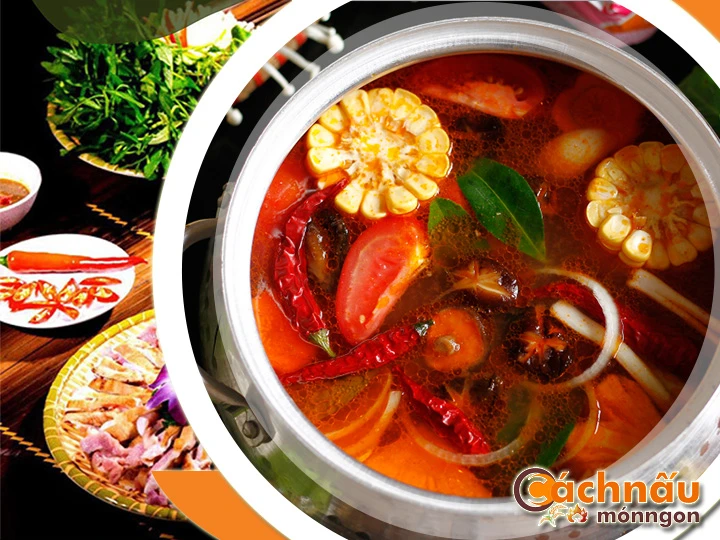Master the Traditional Rabbit Hot Pot Tips You Must Try - Lẩu thỏ
Master the Traditional Rabbit Hot Pot Tips You Must Try - Lẩu thỏ
Blog Article
Hot pot rabbit, a flavorful and traditional delicacy, has been revered across different food cultures for centuries.

This comprehensive guide explores everything you need to comprehend about rabbit hot pot, from its culinary heritage to current adaptations, nutritional values, and easy-to-follow steps for creating the flawless recipe at home. Whether you are a seasoned chef or a novice cook, this guide will encourage and guide you to hone your craft of rabbit hot pot.
EXPLORING THE CHRONICLES ALONG WITH PRACTICES CENTERED AROUND {BRAISED RABBIT DISH|HEARTY RABBIT MEAL|RABBIT HOT POT|RABBIT STEW|BUNNY CASSEROLE|RABBIT CUISINE|STEWED RABBIT
Rabbit hot pot serves as a exceptional and time-honored dish with meaningful cultural roots in different parts of the world. Its appeal stems not only from its flavorful flavor but also from its legacy and traditions.
Rabbit hot pot stands as a special and classic dish with significant heritage in diverse locales. Its renown stems not only from its savory flavor but also from its history and value.
- Tracing Back: Rabbit stew was first made in rural areas where rabbits were a accessible, wholesome food source. In China’s past, it was a family favorite, particularly during cultural gatherings.
- Adopted in Various Places: In the West like France, rabbit was often included in stews, changing into modern versions of rabbit hot pot as the dish found fans worldwide.
2. Rabbit Hot Pot within East Asia's Customs.
- In China: Known as the traditional rabbit hot pot, rabbit hot pot is popular in Sichuan-style cooking, renowned for its fiery flavors and commonly shared during family gatherings.
- Within Korea and Japan: While not widely found, rabbit hot pot is sporadically cooked as a therapeutic meal in Korea, or borrowing ideas from traditional nabemono dishes in Japan, incorporating local greens and herbs.
- Within Vietnam: Although rabbit hot pot is rarely a daily choice, it is popular during special times or in agricultural communities where rabbit meat is plentiful. It is often prepared with distinctive spices such as aromatic lemongrass, ginger, and hot chili, paired with fresh vegetables like river spinach, brassica leaves, or mimosa vegetables. This dish is highly valued for its one-of-a-kind flavor and wholesome qualities, frequently enjoyed during gatherings with friends or family.
Trong văn hóa Việt Nam, tuy không thực sự là món ăn dễ tìm thường ngày, nhưng nổi tiếng trong các sự kiện lớn hoặc ở những miền quê, nơi thịt thỏ dồi dào. Thường được chế biến với các loại gia vị như sả, hương vị gừng, và ớt đỏ, kết hợp với rau ăn kèm như rau muống. Món ăn này được yêu thích nhờ sự đặc sắc trong hương vị và giá trị dinh dưỡng cao, thường xuất hiện phổ biến ở buổi gặp mặt ấm cúng.
3. Stewed Rabbit integral to Food Traditions in Europe.
- Across France: Commonly made as a robust stew with red wine sauce, seasoning herbs like rosemary, and earthy roots. Rabbit hot pot is a traditional recipe for special celebrations.
- Across Italy: The dish named “Cacciatore”, featuring rabbit stewed in tomato and wine sauce, is a precursor to contemporary rabbit hot pot variations.
RECIPES AND TECHNIQUES FOR COOKING RABBIT HOT POT
Rabbit hot pot is a versatile dish that combines natural components, flavorful broths, and specialized methods to create a rich and satisfying meal. Below are key steps into the key recipes and methods to perfect rabbit hot pot.
The Fundamental Recipe for Rabbit Hot Pot
* Ingredients:
- 1 whole rabbit (cut into pieces)
- 4 cups of broth (bone broth)
- Vegetables (mushrooms)
- Spices and herbs (thyme)
- Seasonings (pepper)
- Optional: noodles for serving
* Method:
- Prepare the Rabbit: Clean and section the rabbit into pieces. Season with salt, pepper, and a drizzle of soy sauce for half an hour to enhance the flavor.
- Make the Broth: Heat a pan with a bit of oil. Fry minced garlic and sliced ginger until golden. Add your selected stock and bring it to a boil.
- Simmer the Rabbit: Add the rabbit pieces into the pot and let them cook slowly on a low flame for 30-40 minutes until tender.
- Include the Veggies: Add your preferred vegetables and cook until they are tender but still bright.
- Serve: Transfer the hot pot to a portable stove. Serve with accompaniments and side options like rice or noodles.
Mastering Rabbit Hot Pot Techniques
- Flavor Enhancement:
. Marinate the rabbit with a mixture of salt, pepper, and seasonings to amplify its original taste.
. For more richness, use wine or a mix of fragrant herbs.
- Building Layers of Flavor:
. Start by simmering the rabbit in the broth to draw out its rich flavor.
. Introduce vegetables step by step based on their required time.
- Perfect Timing:
. Avoid cooking too long the rabbit, as it can become tough.
. Test for readiness by checking if the meat easily separates from the bone.
- Broth Adjustments:
. Perfect the flavor by adding additional seasonings as needed.
. Experiment with different broth bases, such as spicy Sichuan-style variations.
Tips for Success
- Choose Freshness: Always choose high-quality rabbit and seasonal vegetables for the highest quality.
- Achieve Harmony: Be attentive of the saltiness in the broth. Try and refine frequently during cooking.
- Creative Accompaniments: Offer a selection of sauces like sesame paste or savory soy mixes to enrich the dining experience.
- Serving Style: Use a communal pot or serve the hot pot at the center of the table to foster interaction.
With mastery of these recipes and techniques, you can make a rabbit hot pot that’s delicious and attractive, turning it into a lẩu thỏ dễ làm standout dish for any celebration or occasion.
Report this page
